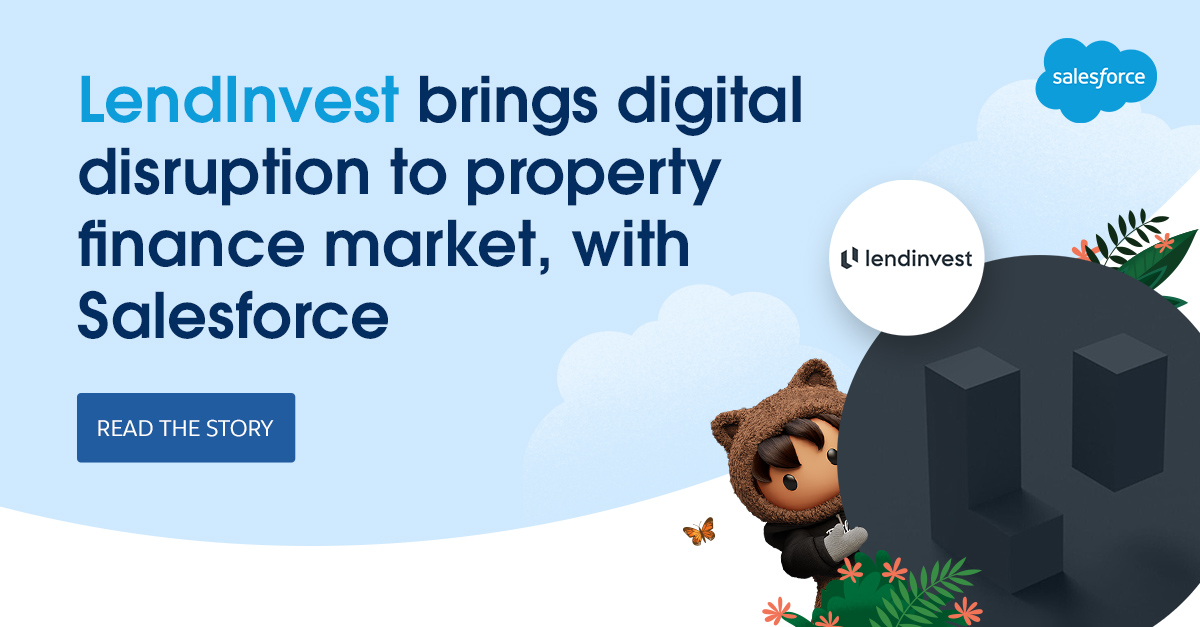Disrupting the UK’s £1.5 trillion mortgage market is an eye-popping opportunity. Precious Ene, Salesforce Product Owner and Change Manager at LendInvest, explains how relentless change drives the company’s ambitions.
Operational Systems and Change Manager – that’s an interesting job title. What does it involve?
Yes, it’s a bit of a confusing title. On the one hand, I’m the product manager, mainly for Salesforce products across the business, making sure the features are working as expected and that we’re getting what we paid for. Then, I’m also in charge of rolling out any operational systems across the organisation.
This is a fast-moving business, and we need to pick things up quickly. The change manager’s role is to make sure we have the right tools to move the business forward, that users are using the tools in the right way, and that we’re constantly learning and adapting. We don’t want the adoption of new tools, or new ways of working, to disrupt our operations.
To confuse things even further, I also head up the business analyst team across the business.
What characteristics do you look for in your toolsets?
Clearly, digital is the future. Having tools that are online, cloud-based, that are super flexible, make our lives a lot easier. I need to be able to manage things from anywhere in the world. Also, I want solutions that are able to integrate.
While we’re more than capable of building our own solutions, we need to be prepared to use the technology that’s available. It’s about being willing to adapt. The more businesses are willing to use available technology, the more power you can put in the hands of the end users.
How do you decide when to work with a third-party solutions provider?
We’ll change our processes if we see there is an established, ready-made solution available. We’ll continue to buy off-the-shelf if it’s quicker and simpler than custom-building a solution.
I see my role as finding the right solution for a specific business need. For instance, with a tool like Salesforce, we’ve been able to adapt it to our processes. Having third party tools like that which are flexible means that we can keep that lead time really short and get to a solution quickly.
Why does speed matter?
For me, the idea of agile means how quickly you can reach an answer or an outcome. If implementing a third-party system gets us to that outcome quicker, then it becomes a much easier decision to make than the months it would take to develop that tool ourselves.
At LendInvest, we’ve built an organisational structure where change can happen quickly. We don’t need 50 people in the room to sign off a decision. As long as I can present the data we can get a decision quickly. That’s a massive willingness to try new things.
How will agility disrupt the property finance market?
Agility and flexibility are the key to disruption, regardless of what industry you’re in. If you can move faster than everyone else then you’re always going to win the race.
I think there are different levels and layers to disruption. Have we disrupted the short-term specialist mortgage market? Absolutely. Have we disrupted the overall mortgage market? I think we’ve got a long way to go before we can say that.
However, because of the way we build our systems, and the agility and flexibility this allows, I believe we’re in a position where we will be able to disrupt the broader market.
What do you value most with Salesforce?
Flexibility. We don’t have to use Salesforce in the way that Salesforce wants us to use it. We can use it how we want with no limitations and that is what makes the product so great.
The most important thing for me is that fourth generation coding language and its drag-and-drop functionality that enables me to create things really easily without needing to be a developer. Secondly, it’s the ease of being able to create data, data structures, and data architecture within the system. Thirdly, it’s the ability to apply rules and validation to this data.
These three things probably take the longest on any system implementation, regardless of what type of system you’re implementing. So, if I have a plan and know what I want to create, Salesforce allows me to do that in five minutes.
How do you measure success?
As a product team, what we look at is the ratio of what we call defects to happy. If we’re building things that need to be fixed or changed all the time or there’s things that are incorrect, then we’re not doing our jobs as a product team. The more things we get right and the less things we have to change or fix, the better we’re performing.
Whereas external metrics are really about how efficient we are becoming as a business. Since bringing in Salesforce, we’ve seen better convergence. We can process more applications with the same amount of people or less. That tells me we’re doing something right.
Read the full story to see how LendInvest is disrupting the property finance market with Salesforce.








